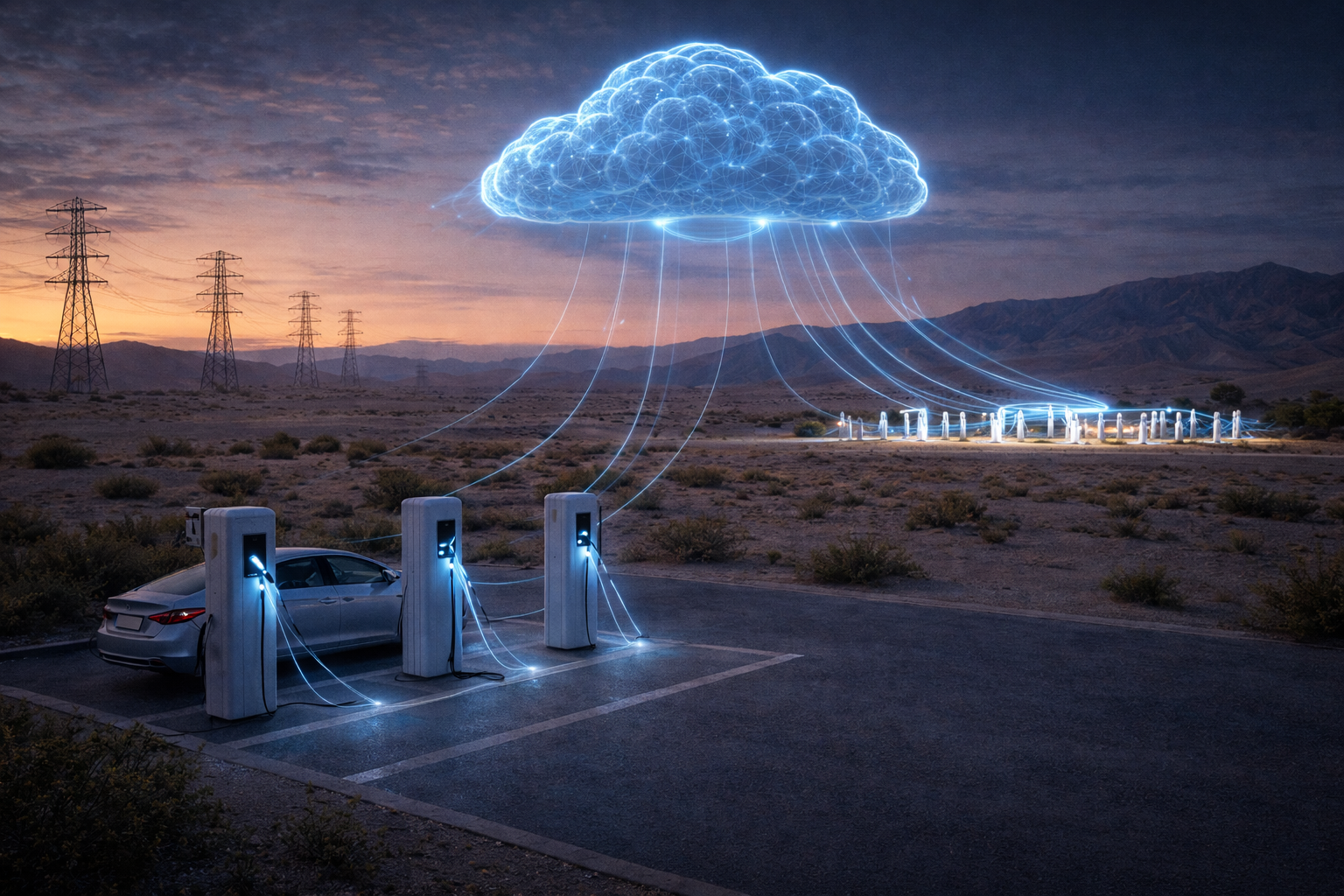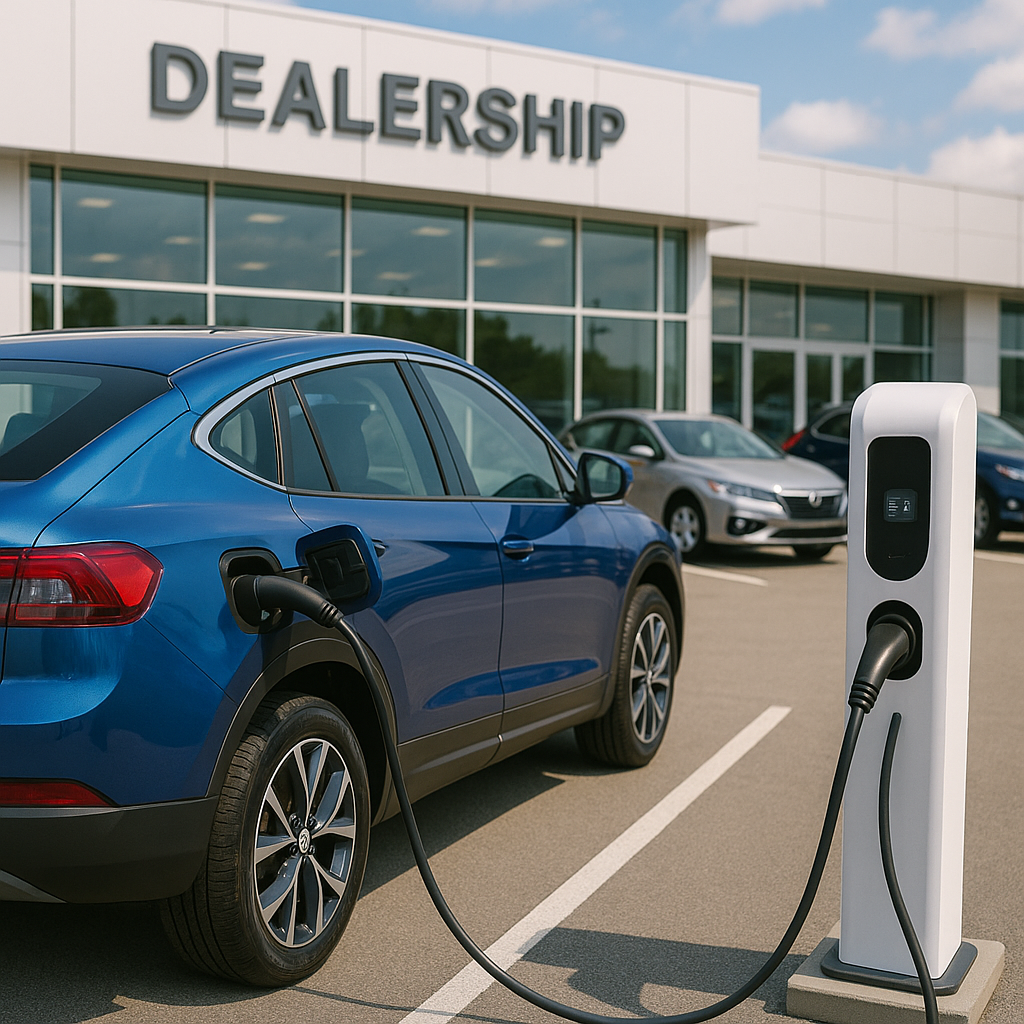How User Interface Design Impacts the Acceptance of eMobility Solutions

Electric vehicles (EVs) have gained popularity with early adopters and their use is rapidly spreading to more drivers and fleets. The next growth milestone will involve getting the average driver behind the wheel, which will require a broader acceptance of eMobility technology.
Optimizing the user interface (UI) design will be integral to driving the implementation of eMobility solutions. A well-designed digital experience makes it much easier for people to utilize electric vehicles and charging stations. And that ease of use encourages wider adoption of the technology.
Over 85 million electric vehicles are expected by 2035 in North America alone. Many more will take to the roads of Europe, Asia, and other continents. This massive expansion will require a re-engineering of the electrical grid, widespread deployment of charging stations—and streamlined user interfaces. Only with straightforward UIs will all these millions of drivers feel comfortable making the switch.
Software companies such as S44 are thus creating eMobility solutions. S44’s full cycle development encompasses both user interface and user experience (UX) design, in addition to user research. The latter informs acceptance requirements to ensure the software performs according to market demands. Furthermore, S44 handles testing and optimization to polish the finished software product.

The Importance of User Interface (UI) Design in eMobility Solutions
User interfaces, their structure and function, have a deep impact on the average motorist’s overall experience. Consider how simple it is to use a smart phone. That’s because their base UI has been refined extensively. Billions of people now use these devices daily—even non-tech-savvy individuals. For eMobility to attain comparable popularity, it will also need a compelling UI design.
An effective user interface makes the status of equipment—and how to modify that status—obvious to people. For complex technology like electric vehicles and charging stations, an elegant UI design should help encourage uptake of the hardware.
Once this is in place, anyone will be able to gauge remaining mileage, charge optimally, and generally feel confident operating the machinery. As such, improving the eMobility UX also means enhancing safety, performance, and pleasure.
Increasing eMobility Solution Acceptance Through User Interface Design
Because good UI design improves the user experience, a well-made user interface for eMobility solutions increases acceptance. Drivers are more likely to embrace driving a vehicle that delivers an intuitive experience. By contrast, if they struggle to figure out how to manage vehicle charging, for example, acceptance levels will decline.
Intuitive Navigation and Information Architecture
One feature a user interface absolutely has to get right is basic navigation. Even those unfamiliar with eMobility technology should be able to engage without issues. For example, a driver shouldn’t need to grind through multiple levels of menus to use important safety functions.
Many aspects of driving an electric vehicle are similar to those found in its fossil fuel counterpart. However, for EV-specific tasks—like managing battery levels or finding the nearest charging station—the controls and displays should be self-explanatory. A mix of mechanical buttons, on-screen options, voice commands, and audio signals can let any driver navigate with confidence.
The system’s information architecture is what enables user-friendly navigation. This is the arrangement of data coming from the EV and from related infrastructure. When well-constructed, information architecture simplifies complex eMobility features. Drivers ought to have convenient access to the state of charge (SoC), estimated range, vehicle diagnostics, route planning, and other relevant information.
Data Connectivity and Real-Time Updates
On the road, electric vehicles are subject to dynamically evolving situations. Internal conditions change, as do road conditions. To respond to these challenges, EVs use data connectivity and real-time updates. A smart UI design relays live information to drivers without distractions, elevating the user experience. This means you always have your finger on the pulse of the action.
Real-time data can strengthen the electric grid at the same time as it improves results for vehicle owners. To illustrate, S44 developed a software solution with BMW called ChargeForward, which optimizes vehicle charging. Real-time data from BMW vehicles joins inputs from utilities to guide charging times.
Customers using this solution can access such data through a carefully produced user interface. Thanks to this feature, it’s now feasible to charge EVs when electricity costs less and comes from renewable resources. The grid also benefits by having a more even load throughout the day.

Integration of Charging Infrastructure and Other Systems
As user interface designs continue to improve, the eMobility ecosystem can in turn deliver better experiences—even superior to those provided by internal combustion engine vehicles. Manufacturers are therefore busy collaborating with charge point operators, utilities, energy companies, and software development firms. It’s not just the EV itself that needs a slick digital interface but the charging infrastructure too.
Charge points have back-end data processing functionality. UI design aids drivers in connecting with that functionality. Well-integrated charging infrastructure thus boosts the quality of UX along with the adoption of eMobility.
With a smartphone app, one could determine charge times and make payments. Alternatively, a vehicle could plug into a charger and automatically negotiate the details. The goal is to make eMobility fast and seamless. EVs with highly usable interfaces fit into the expanding charging network just as easily as they fit into people’s lives.
Visual Design and Branding
To a large extent, the human brain processes its environment visually. Therefore, visual elements have an outsize effect on user perceptions of eMobility solutions. In this way, cohesive and attractive branding can build trust in the eMobility industry.
A user interface should ideally have recognizable elements that people instantly associate with positive brand impressions. A case in point is brands like Audi and BMW, which are associated with high-quality cars. S44 works with these and other companies to apply consistently appealing design in user interfaces. Your organization can partner with S44 for visual design and branding too.
UI design is important, not just for electric vehicles and charging stations but also for personalized car buying. Consider the Build-Your-Own Configurator S44 built for BMW. It uses data from BMW’s own systems to present online shoppers with vehicle options. The complexity of billions of possible vehicle configurations is concisely displayed in a visual interface that’s easy to use.
Streamline eMobility Design with S44
User experience shapes how drivers interact with electric vehicles and charging stations. Hard-hitting UI design encourages people to buy EVs. As such, eMobility companies should focus on user interface design for long-term growth and acceptance.
S44 is the impactful digital experience provider for the automotive and eMobility industries. Get in touch to learn more about how we can help you deliver an optimized digital experience through custom software.







